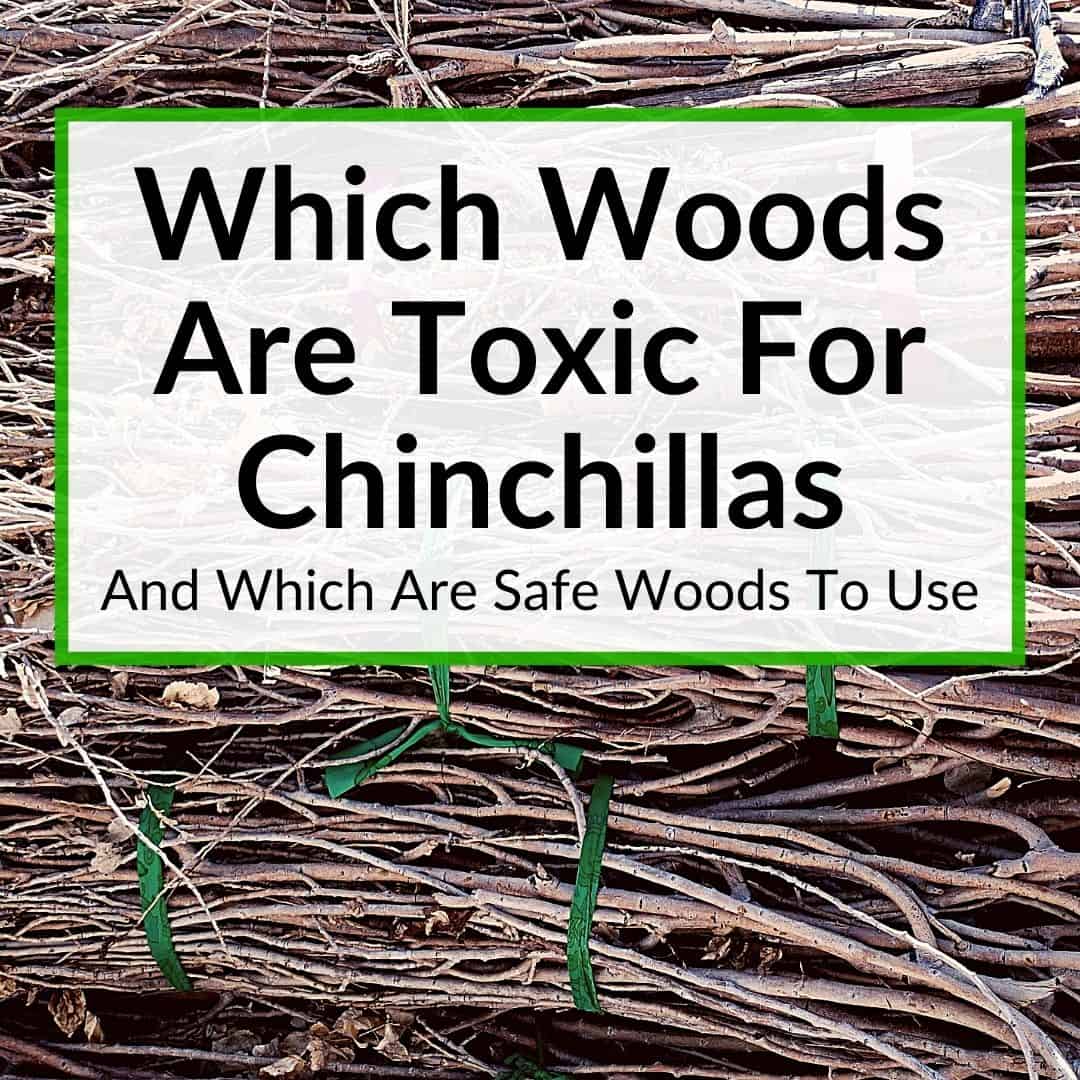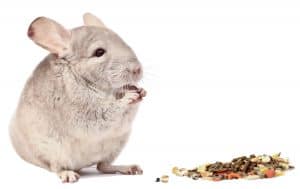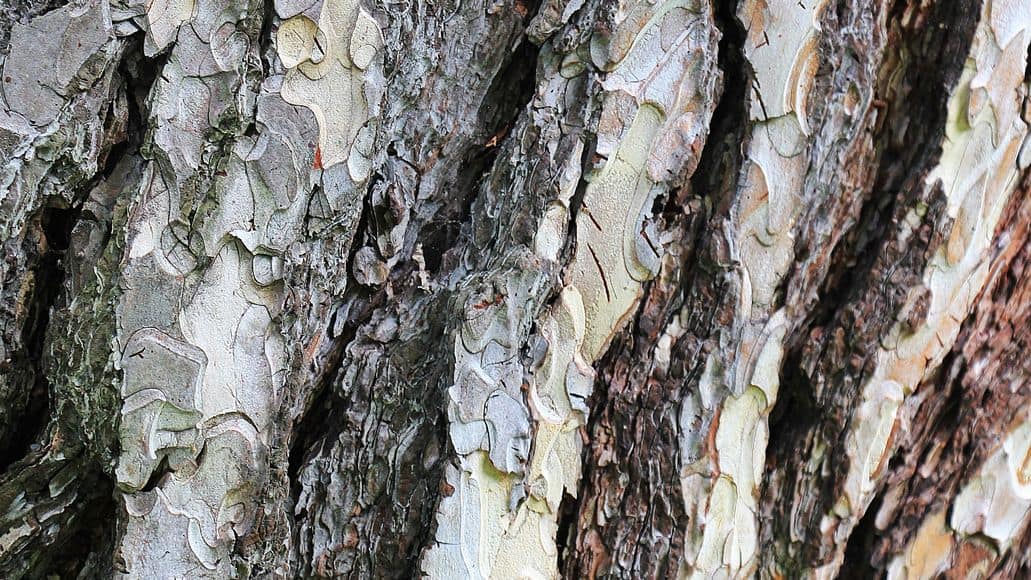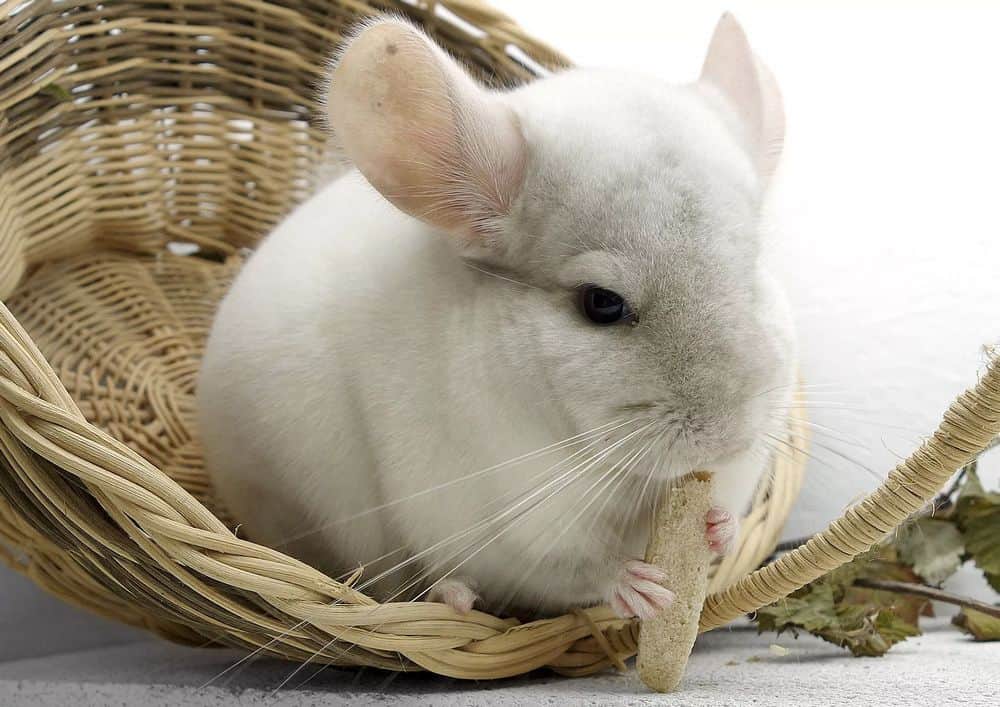
Chinchillas have teeth that grow continuously, and they need the ability to file down their teeth daily.
This can help to prevent dental issues, overgrown teeth, pain, and more severe infections.
Many new chinchillas’ owners understand this or have been informed by a local breeder, but still aren’t quite sure which woods would be considered safe to provide chinchillas to chew on.
You need to know which woods are toxic for chinchillas and which woods are safe.
That’s the question I want to answer today.
After going through the same struggle in the initial days as you, I wanted to provide this information for the safety and health of all our furry friends.
So, which woods can a chinchilla have? This list below includes are all woods that are considered safe for chinchillas.
Contents
Chinchilla Safe Wood List
- Apple
- Arbutus
- Ash
- Aspen
- Bamboo
- Cholla
- Cottonwood
- Dogwood
- Elm
- Hawthorn
- Hazelnut
- Kiln-Dried
- Pine
- Kiwi
- Magnolia
- Manzanita
- Mulberry
- Ocotillo
- Pear
- Pecan
- Poplar
- Quince
- Rose
- Rowan Berry
- Sycamore
- White Birch
- Willow
- Yucca
On the list above, you will notice the woods that are considered safe for your chinchilla to chew on.
It’s also important to note that white willow would not be considered a safe wood for your chinchilla.
In addition to white willow wood, here is a quick list of woods that you should never offer to your chinchilla.
Unsafe Woods For Chinchillas
- Crab Apple
- Broadleaf
- Birch
- Grapevine
- Lime Tree
- Madrone
- Medlar
- Sequoia
The rest of this post will cover this topic more in-depth and answer some frequently asked questions new chinchilla owners often have when it comes to providing safe wood for your chinchilla to chew and to use inside of the cage.
Lastly, I will have a section in this post designed to teach you how to prepare wood for your chinchilla to chew on if you prefer not to purchase the wood online or from a local pet store.
😕Adopting and caring for a new chinchilla can be intimidating and confusing. It does not have to be so do not let it be.

Be sure to check out my full digital eBook “Avoiding Critical Mistakes Ultimate Chinchilla Care eBook” to have the best advice, tips, and tricks and supply recommendations to make adopting and caring for a chinchilla much more comfortable and easier to understand.
You can learn more about this eBook offer using the link directly below.
Learn more here:👉 Avoiding Critical Mistakes Ultimate Chinchilla Care eBook Offer
Let’s dive into the details that are imperative to understand for your chinchilla’s safety and enjoyment when it comes to chewing on wood that is deemed safe for chinchillas and keeping those teeth filed down.
Safe Wood For Chinchillas: What You Need To Know
First and foremost, it’s essential to understand that wood sticks for a chinchilla aren’t necessarily a treat or a luxury.
I’d argue they are much needed and more of a necessity and part of providing the best care possible.
Yes, your chinchilla can naturally file down their teeth.
Some of this will take place using just their natural diet, such as timothy hay.
Still, this amount of tooth filling is minimal compared to the amount of filing a chinchilla is accustom to in the wild.
The chew sticks provide a harder surface and help to file down the teeth, even more, preventing dental and health issues in the future.
Not to mention, the pain that a misaligned or overgrown tooth could cause your chinchilla to be in major discomfort.
Obviously, none of us want our chinchilla to experience this pain, and it’s possible that you don’t prefer to order your own chew sticks (which is what I recommend for the record).
If that’s the case, you may be using your own wood from a tree in your own yard and wondering if it’s safe and what prep work is involved in the process.
As stated previously, the list above is your starting point for ensuring that your chinchilla is chewing on a tree that is considered safe in the first place.
Refer to that list up above before offering any wood sticks to your chinchilla to chew on.
Let’s keep moving forward and begin discussing a few additional woods and then cover what steps need to be completed to prep the wood for your chinchilla.
Is Pine Safe For Chinchillas?

Yes, chinchillas can chew on pine wood. Ordering or prepping your own pinewood for your chinchilla is safe and okay for your chinchilla to chew. We will discuss how to prep the wood accordingly later in this post.
Can chinchillas eat pine cones? Yes, these are safe, too. But you need to prepare any pine cones you give your pet first, to ensure they are safe. Either that, or you buy your pine cones from a pet store. Those should have already been cleaned (make sure it says so on the packaging).
Can Chinchillas Have Douglas Fir Wood?
No, chinchillas can’t have Douglas fir wood. Douglas fir wood is considered a wood that should never be offered to chinchilla due to the chance of illness that may follow if a chinchilla ingests it.
Can Chinchillas Eat Bamboo?
Yes, a chinchilla can have bamboo wood. Bamboo wood can be offered to chinchillas either by purchasing the wood or by prepping the wood yourself before offering to your chinchilla.
Is Twine Safe for Chinchillas?
Yes, chinchillas can have twine if it’s constructed of sisal and seagrass.
However, using cotton or synthetics can be dangerous if ingested by your chinchilla.
Cotton and synthetics can cause blockages and digestive tract tangles.
If you use twine or any form of rope, be sure to remember to only use sisal and seagrass.
Can Chinchillas Eat Wood?
Yes, hopefully, this post has made it clear to this point that wood is a primary accessory needed for chinchilla and they can absolutely chew on wood.
They should not necessarily be chewing wood in amounts that are causing them to ingest large amounts and they naturally understand this and use it much like a dog will use a bone.
To chew on.
How To Safely Prepare Wood For Chinchilla’s Cage And To Chew

Now comes the fun part where we can briefly discuss how you can go about preparing and using your own wood and sticks for your chinchilla to chew on.
You have 4 steps in the process:
- Step 1: Collect the sticks
- Step 2: Clean the Sticks
- Step 3: Boil the Sticks
- Step 4: Bake the Sticks
Here’s a more in-depth look at these steps.
During step 1, you want to make sure you are collecting sticks from a tree that is pesticide-free and ideally organically raised.
The only real way to be sure of this is to only use trees from your own property.
While you could speak to local orchards or even try trees from your city, it’s likely that it’s not as safe as sticking to your own.
Once you collect your sticks and you are sure you have a clean source of wood, proceed to wash the sticks with a scrub brush and hot water to remove as much dirt, grime, and contaminants as possible.
Once you feel you have done a complete job in this step, all that’s left is to boil the sticks for 30 minutes.
This is going to ensure that you are sterilizing the sticks protecting your chinchilla from potentially getting ill.
Now, you simply need to bake the sticks for another 30 minutes at about 250 degrees F.
This is how to get your sticks capable of snapping easily and removing all the moisture from the center of the stick.
That’s it and all there is to it.
This is a cheap and natural way to provide your chinchilla with an excellent way to file down their teeth and keep them mentally stimulated to help avoid boredom inside and outside of their cage.
Keep It Safe By Ordering Organic Chew Sticks Online
Now, let’s assume that you don’t feel like going through any of the hassles we just discussed by doing the sticks for yourself.
In all honesty, I don’t really see a reason to do it either, or I don’t do it even though I easily could.
It’s easier just to order the sticks, and they are cheap enough that it doesn’t bother me to do it this way whatsoever.
I recommended purchasing chew sticks like these apple wood chew sticks.
I offer them to my chinchilla with frequency, so I recommend purchasing yourself a decently large supply of them and to always have plenty on hand for your chinchilla.
2 bags of the sticks I referenced previously will last you roughly 2-4 weeks depending on how often you give them to your chinchilla.
Problems with a chinchilla’s teeth can cause issues and cause stress on your chinchilla, so if a few bucks can help eliminate this issue altogether, why not just do it?
Other Toys And Hay Help To File Down Teeth Further

The last bit of advice I want to give you is to always ensure that you are providing other toys throughout the cage as well.
Hanging toys and other items for your chinchilla to chew can keep them occupied and help them to file down their teeth even further. This helps prevent malocclusion in chinchillas and other tooth issues.
This, in addition to always providing the best hay, will ensure that your chinchilla is getting what they need on a nutritional level as well as what they need to keep their teeth and dental hygiene in check.
Which Woods Should You Use For Your Chinchilla Cage Ledges And Shelves And Accessories?
A few different kinds of wood would be considered safe to use in your chinchilla’s cage.
Not only that but in order to create one of the best chinchilla cages possible, wood ledges and shelves should be present to allow them space to climb and jump around.
Most of the time, aspen kiln-dried wood or pine wood will be used for ledges and shelves that you will place inside of the chinchilla cage.
Both of these options would be considered safe for your chinchilla and will be used more as a climbing and jumping ledge than a chew accessory.
However, do not be surprised if your chinchilla decides to chew on the shelves from time to time or if they need to be replaced every now and then.
Chinchilla-Safe Wood: Final Thoughts
A chinchilla’s teeth can undoubtedly become an issue without the ability to chew when they please.
It helps keep those ever-growing teeth aligned and prevents overgrowing.
With some chew sticks and plenty of other great accessories in the cage, you won’t have much to worry about.
Chili and I wish you the best of luck with your new chinchilla.
Share Your Thoughts.
Do you have steps or information you believe needs added to this post? Do you recommend prepping sticks to provide to your chinchilla?
Be sure to share your thoughts, stories, and concerns by dropping a comment below. As always, Chili and I appreciate you stopping by and reading.

Renee says
Hi ! Just wanted to pick your brain. I’m researching which trees I have in the area (Thunder Bay, Ontario, Canada) for my 4 chins. On your list is: Ash – in my area is Black Ash, Green Ash, Largetooth Ash and White Ash. Are all Ash trees considered safe? We have White Birch (Birch is on your list). Are any Hawthorn’s safe, we have a few different types. We have Balsam Poplar – Poplar is on your list. And last we have Peach Leaf Willow. I am sorry to bother you, I am scared to give my babies something that is not good for them. We are having a stick shortage at our local pet stores so I want to try sterilizing my own. Any help would be greatly appreciated!
Thanks!
Lyndsey R says
Oxbow has the sunflower stalk dangle toys and I was wondering if they are safe for chinchillas
Josh says
I’m not sure. I wouldn’t risk it, unless you get approval from a vet.
Richard says
Can chinchillas chew on hickory wood blocks or the bark from a hickory tree
Josh says
I’m not sure about hickory, to be honest. I couldn’t find any info about it either. I’d ask your vet before giving your chin hickory, or just stick to one of the known safe woods.
Benji Midgley says
What about alder wood
Josh says
Alder should be fine, since it’s similar to birch, but I’m not 100% sure. I couldn’t find any good info either. I’d ask your vet, or just stick to woods that are known to be safe.
Kellie says
Hi I have a rose bush in my yard that constantly needs to be cut back. Can I boil and them for my chinchillas?
Josh says
Should be fine, as long as you don’t use pesticides.